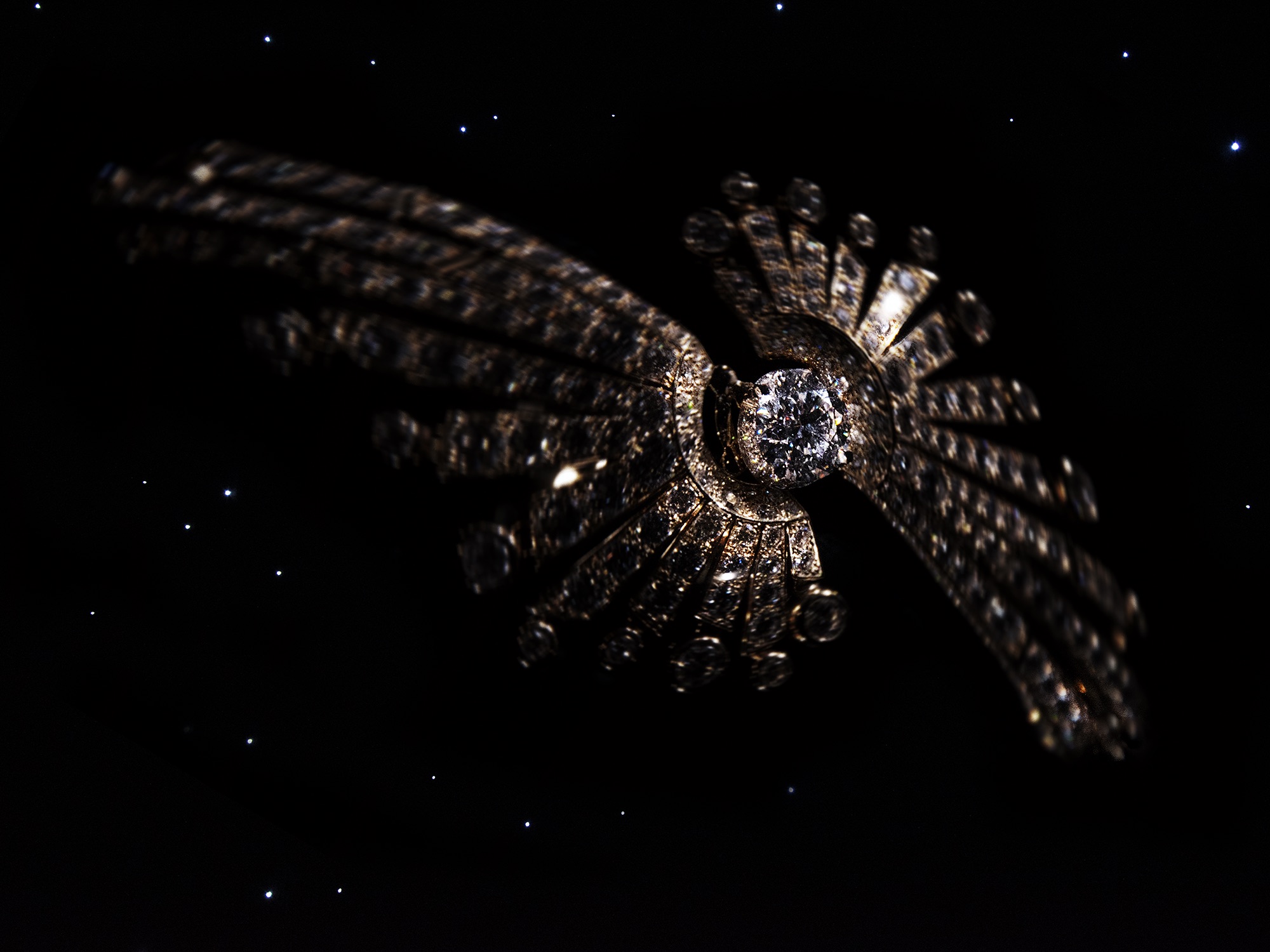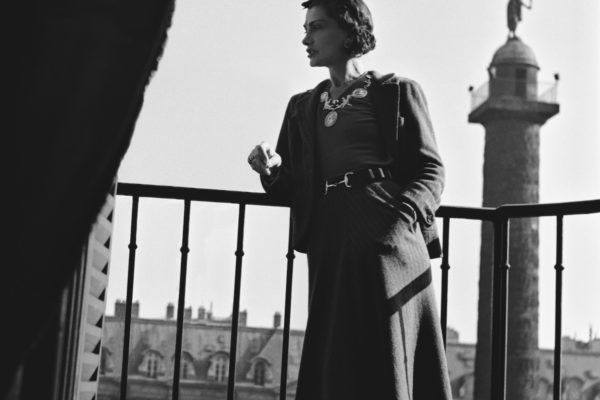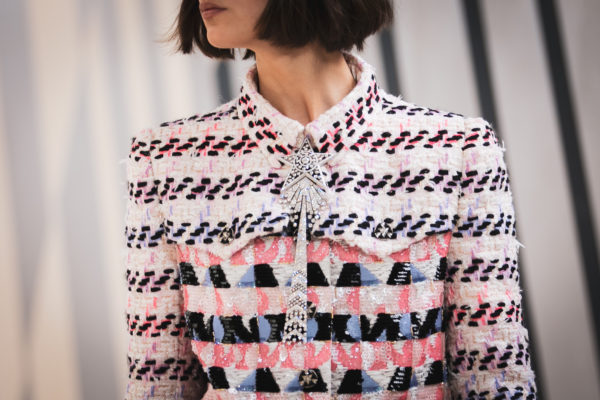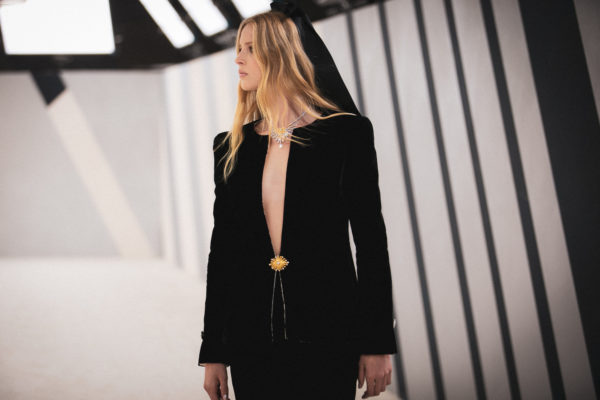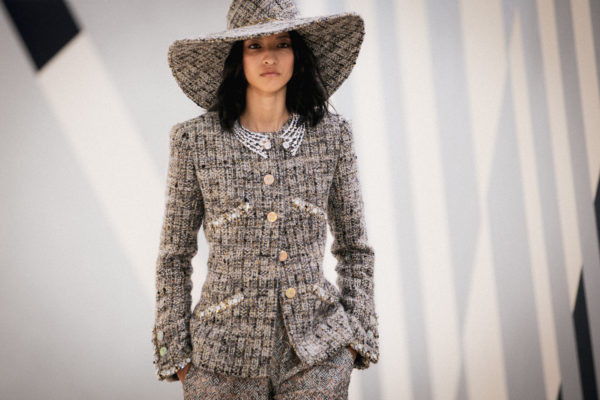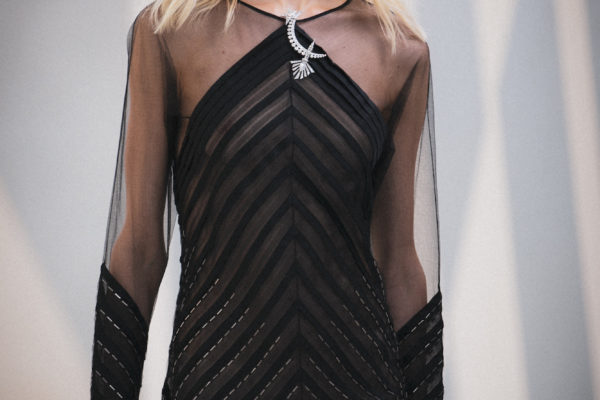Chanel’s 1932 collection: the story rewritten
In November 1932, Gabrielle Chanel shocked the world of high jewellery by presenting a collection entitled “Bijoux de diamants”. Some 90 years later, the house is launching a new high jewellery collection that pays tribute to first one. Some of the pieces were worn by the haute couture models during Paris fashion week. Isabelle Cerboneschi, Paris. Pictures of the jewels: Buonomo & Cometti
In 1937, Gabrielle Chanel decided to live year-round at the Ritz in Paris. From her balcony, she overlooked all the private mansions on Place Vendôme, including those of the great jewellers: the Hôtel Baudard de Saint-James, home to Chaumet, the Hôtel de Nocé, home to Boucheron, and the Hôtel de Ségur, belonging to Van Cleef & Arpels. As for Cartier and Mellerio, located at 13 and 9 rue de la Paix, they had also become her neighbours. A revenge?
You have to go back to 1932 to understand how much Gabrielle Chanel must have enjoyed looking down on the jewellery aristocracy from her suite at the Ritz. It had been three years since the economy was at its worst after the Black Thursday of 1929 and the stock market crash that had brutally ended the years of growth following the First World War. All areas were in a state of disaster, including the diamond trade. To revive it, the Diamond Corporation Limited of London had a brilliant idea: to call on the most revolutionary fashion designer of the day – Gabrielle Chanel – to create a jewellery collection with entrusted diamonds.

“Sales of diamonds had been badly hit by the economic crisis of 1929, and they put their trust in the creative talent of Gabrielle Chanel, then at the height of her fame, to revive them. With her contemporaries – the artist Paul Iribe for the design of the jewelry, the poet Jean Cocteau for the collection manifesto, and Robert Bresson (later a celebrated film director) for photographs of the pieces – Gabrielle Chanel created a collection that was unique. It caused a sensation at the time and still today it remains the cornerstone of our jewelry designs”, explains Marianne Etchebarne, Global Head of Watches and Fine Jewelry Product Marketing, Clients and Communication at Chanel. This collection will be soberly named “Bijoux de diamants”.
With the artistic help of Paul Iribe, who has shared her life since the early 1930s, Coco Chanel has brought a wind of irreverence to the world of jewellery. Together, they invented pieces of mad modernity: necklaces that didn’t close, open rings that gave the impression that the diamonds were just placed on the fingers, a fringe of diamonds worn as a tiara in a surrealist setting. “The reason that I first imagined costume jewellery was that I found them lacking in arrogance in an age of too much pomp and circumstance. This consideration fades away in a period of financial crisis when, for all things, an instinctive desire for authenticity is reborn, which brings back to its rightful value an amusing piece of fashion jewel. If I chose the diamond, it is because it represents, with its density, the greatest value under the smallest volume”, stated the couturier in the “Bijoux de Diamants” press kit of 1932.
The exhibition was to be held from 7 to 19 November 1932 at Mademoiselle Chanel’s home, in the Hôtel Rohan-Montbazon at 29 Faubourg Saint-Honoré. The entrance fee was set at 20 francs and the proceeds from the sale of tickets were to be donated to two charities. When informed of this operation by an article published on 26 October in L’Intransigeant, the representatives of the Chambre syndicale de la haute joaillerie tried to prevent this competition, which they considered unfair. And so a delegation of jewellers from the Place Vendôme gave Gabrielle Chanel an ultimatum, ordering her not to sell any jewels and to dismantle them after the exhibition, under their supervision. She was also required to send her clients to these houses so that they would take care of their reproduction.
This was to deeply misunderstand Gabrielle Chanel, who had seen a lot since she left the orphanage in Aubazine where she had grown up. Despite her origins, she had managed to climb to the top of the social ladder at a time when this was hardly the norm. So it was not the ire of a handful of jewellers that was going to scare her. The exhibition did take place and it was a success, not only for her, but especially for the Diamond Corporation Limited. The value of the collection is estimated at 93 million francs at the time. More than 30,000 visitors came to admire these original jewels in the form of comets, feathers, knots and cascades of diamonds.
“Obviously, the constellations that I have scattered in the hair, the comets that will land on the shoulders followed by their shower of stars, the crescent moons and suns that I have had made by the best craftsmen in Paris who were joylessly free because of unemployment – my stars – all this is very romantic! But how can I find anything more fitting and more eternally modern? I don’t want to compete with jewellers at any price. I don’t sell jewellery. I wanted to give new life to a very French art form that was in danger of falling into lethargy during the crisis. I only ask to be copied. This is the best proof of success”, explained Gabrielle Chanel in an interview published in L’Illustration on November 12, 1932.
The setting of the jewels was simplified, sometimes resembling simple wires, in order to highlight the stones, as can be seen in the period pictures of the necklace representing the Big Dipper. Some of the jewels were sold. Chanel was able to buy back a star brooch that is now part of its heritage. The company is continuing its quest in the hope of acquiring other historical pieces.
In memory of this exhibition, Chanel launched a collection inspired by it in 2012. Ten years later, the house has created a new set of jewels, the “1932” collection – which includes 81 pieces, 15 of which are transformable. The first part was unveiled in February and the second was presented at the Grand Palais Ephémère during the haute couture week held in Paris last July. “I wanted to return to the essence of 1932 and synthesise the message around three symbols: the comet, the moon and the sun. Each star shines with its own light,” explains Patrice Leguéreau, Director of the Chanel Jewellery Creation Studio. These are highly symbolic themes, as they can be found on the stone mosaics leading to the dormitories of the Aubazine convent, where Gabrielle Chanel grew up.
If the collection presented by Gabrielle Chanel in 1932 had surprised visitors and clients with its modernity, the one revealed at the Grand Palais Ephémère was breathtaking. The centrepiece – a transformable necklace called Allure Céleste in white gold set with diamonds and a 55.55 ct oval sapphire – was sold out from the very first presentations. In each showcase, a jewel interpreted one of the three themes chosen by the Director of the Chanel jewellery creation studio. And each piece seemed to have a movement or a life of its own. “I wanted to create a different vision of this legacy, by setting these celestial elements in motion. To do this, I have given figurative expression to the shimmer of the comet, the halo of the moon, and the radiance of the sun”, says Patrice Leguéreau.

The earrings are often asymmetrical, the rings are articulated on several phalanges or adorn several fingers. In addition to the splendour of the stones, there is a playful side to this collection: in front of each piece, one wonders how it is articulated and in how many pieces it will be deconstructed. Indeed, the versatility of some of the jewels is striking. “The spirit of movement, freedom and flexibility inspired by Mademoiselle Chanel in 1932 is celebrated in the transformable nature of some of the pieces. Elements of the necklaces may be detached and worn as brooches, while the central stones can be used to enrich a ring or earrings”, says the director of the jewellery design studio.
While the 1932 collection was solely dedicated to diamonds, both white and yellow, this tribute collection is sprinkled with coloured gems. “In addition to diamonds, I have also introduced color, using exceptional gemstones to represent the celestial universe: blue diamonds, yellow diamonds, blue and yellow sapphires, opals, and rubies”, says Patrice Leguéreau.
A few days after the presentation, guests attending Chanel’s autumn-winter 2022/23 haute couture show were able to discover some of the pieces from the 1932 collection. Virginie Viard, the artistic director of Chanel, chose to have the models adorned with jewels: out of 44 looks, 14 were accessorised with gems that matched the tweed suits or pleated evening dresses.
“I wanted to cover women in constellations,” Gabrielle Chanel would say. I hope that this is what we have achieved, by sprinkling showers of diamonds over their décolleté, putting scintillating comets around their wrists, and presenting them with celestial shapes, illuminating womens’ own radiance”.
